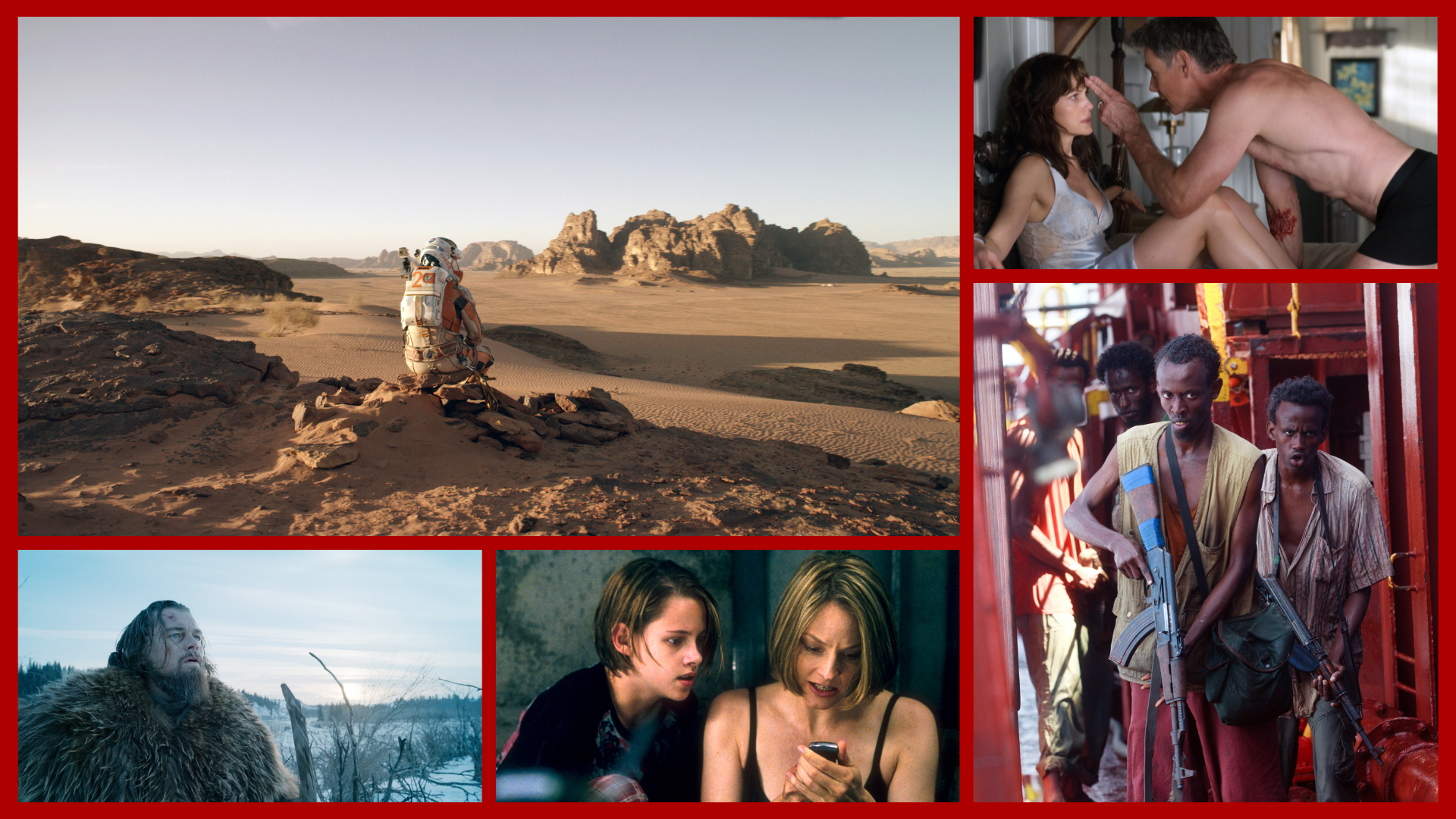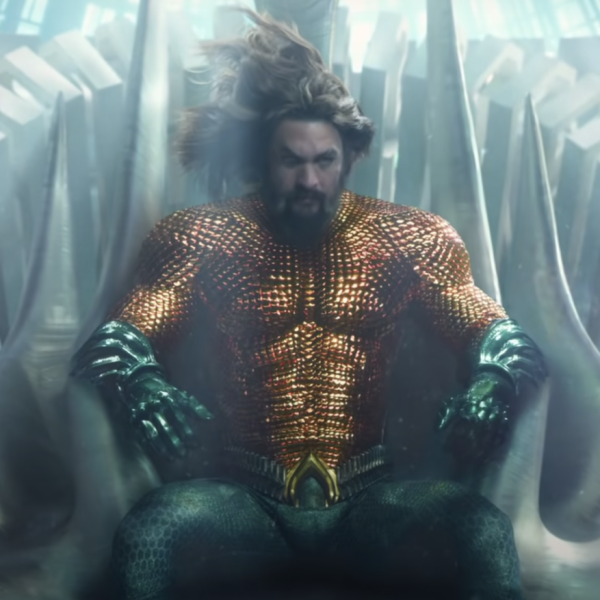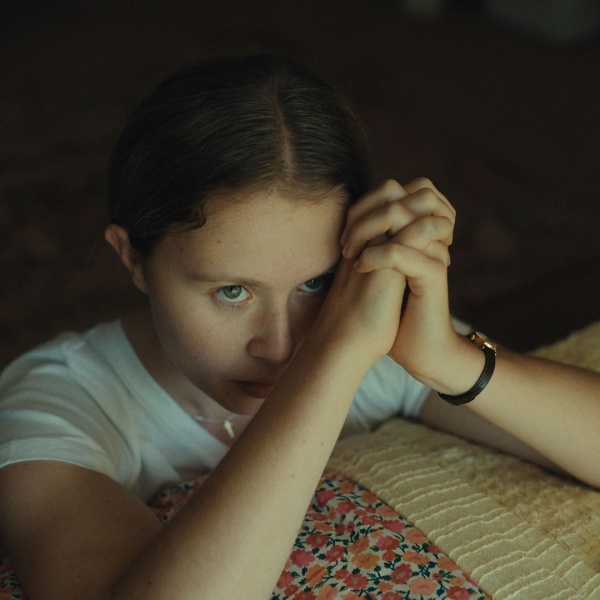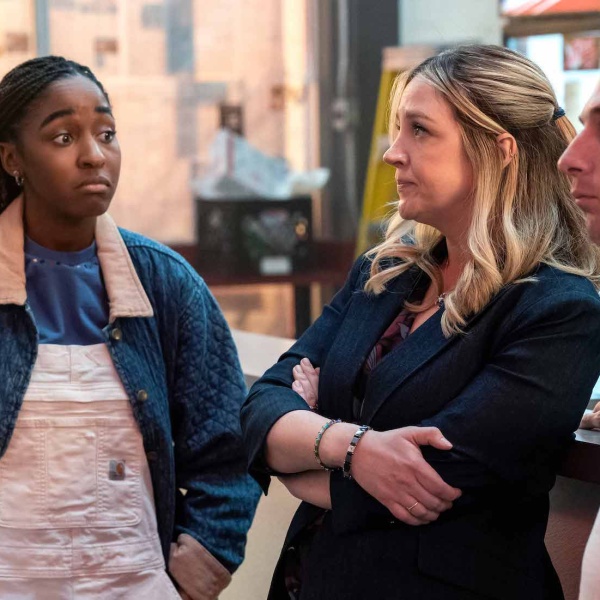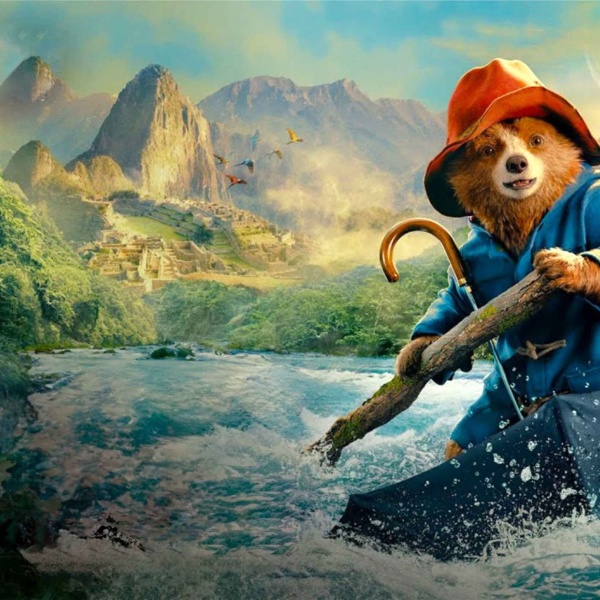From “Gravity ” and “Wild” to “The Way Back” and “Jaws,” the most compelling survival movies fearlessly examine characters’ will to live, imbuing their perilous struggles with the intensely personal motivations and desires that make every person unique. These stories allow audiences to consider what specific obstacles along one person’s quest for survival and happiness say about humanity writ large. What’s more, they challenge viewers to look inward and consider what truly matters when the chips are down.
The best survival films immerse viewers in life-or-death scenarios, balancing realism and believability with slow-burn suspense. Even in lighter survival fare, such as “Swiss Family Robinson,” filmmakers have to keep up the pace and pressure to deliver the subgenre’s characteristic urgency. Sure, “Cast Away,” “The Revenant,” and epic sagas like them are sweeping in scope with the lengthy running times to match. But survival stories work best when every frame feels like a passive threat to the protagonist’s existence.
Many of these films are adapted from books, which in turn recount harrowing real-world nightmares. Accuracy is not required for a docudrama, such as “Alive” or “The Impossible” to succeed at the box office or with critics. But factually-based films undoubtedly offer more value to movie lovers learning about the world through a cinematic lens, and this ranking of survival films generally reflects that.
Pack water, a weapon, and some freakin’ sunscreen: Here are the 20 best survival movies ever made, including “Captain Phillips,” “127 Hours,” “A Quiet Place,” “The Martian,” “Titanic,” and more.
20. “The Impossible” (2012)

Fourteen-year-old Tom Holland makes his feature film debut in “The Impossible,” an epic dramatization of the 2004 Indian Ocean tsunami disaster that claimed nearly 230,000 lives. Directed by J. A. Bayona (“Jurassic World: Fallen Kingdom”), the film is based on Spanish physician María Belón’s harrowing experience. She survived the event with her husband and three sons, later returning as an on-set consultant in many of the same locations where her family was vacationing when the 9.3-magnitude earthquake hit.
Starring Naomi Watts and Ewan McGregor, “The Impossible” has been criticized for focusing its story on a white family when the real events disproportionately impacted the native people of Southeast Asia. It appears on this list in spite of that choice for its significant artistic achievements, reflected in real survivors’ defenses of the film arguing its accuracy merits significant praise. Massive sets incorporating thousands of gallons of water were used to convincingly recreate the perilous landscape the tsunami’s real survivors faced. Safety concerns were heightened on set because of Holland and the other child actors.
“I remember [Naomi Watts and I] were hugging this tree, but because of the current, it would blow our legs underneath,” Holland said in a 2012 interview with The Hollywood Reporter, describing a hazardous and unpredictable filming experience. “So if you look at some of the outtakes, we would be doing the scene and suddenly one of us would disappear and we would shoot across the way.” Watts received a Best Actress nomination at that year’s Academy Awards.
19. “Captain Phillips” (2013)

Directed by Paul Greengrass, “Captain Phillips” is controversial not for its content, but because the film’s real-life inspirations disagree about what happened during the 2009 Maersk Alabama hijacking. Tom Hanks stars as the titular Richard Phillips, the captain of an American cargo ship seized by Somali pirates. Over four days, Phillips and his crew navigated an increasingly fraught hostage situation, involving numerous escape attempts and multiple onboard fatalities. The film is based on Phillips’ account of events, as told in his 2010 book “A Captain’s Duty.” Following its release, other survivors argued the movie was inaccurate and portrayed Philips as a hero he was not. Phillips and the shipping company he worked for were subsequently accused of knowingly putting their employees at risk by sailing into dangerous waters. Maersk settled a lawsuit regarding the incident in 2017, with the plaintiff’s firm describing the case as having “effectively ended Somali piracy.”
“Captain Phillips” was nominated for six Academy Awards, including Best Picture. Barkhad Abdi, who portrayed real pirate Abduwali Muse for the film, received a Best Supporting Actor nod for a series of electric scenes with Hanks. As compelling as it is claustrophobic, the project boasts feel-it-in-your-bones sound editing and a strong combination of interior and exterior shots. On deck, tense acting exchanges pull focus from the stunning, sweeping horizon. Below, warring motivations and mounting tension clatter around like coins in a tin can, creating a jarring effect with an almost addictive rhythm.
18. “Panic Room” (2002)

Jodie Foster appears with a 10-year-old Kristen Stewart in “Panic Room”: David Fincher’s edge-of-your-seat survival thriller from 2002 about a violent home invasion. Set in a brownstone on New York City’s Upper West Side, the film features Forest Whitaker, Jared Leto, and Dwight Yoakam as burglars intent on retrieving a hefty sum they believe is hidden in the house. They’re really only after the money. But when mom and daughter successfully make it to the panic room — a steel-reinforced box Whitaker’s character installed — the intruders decide to force the pair out of their metaphoric fox hole.
A claustrophobic crowd-pleaser, “Panic Room” was widely liked upon release and did well at the box office. But in a 2021 interview with Variety, Fincher said he was unhappy with the final product. Speaking about “Gone Girl,” Ben Affleck complimented Fincher’s extensive prep on “Panic Room.”
“It did not work, it did not work,” the director refuted. “And it didn’t work for one of the most interesting reasons, which is that it obviates a sense of authorship by the thespians. And you need that. I believe that every voice is there to be nurtured so that people when they go, ‘I think you’re missing something here,’ I want people to feel like they can stop the train to say that. You don’t get to do it three times and be wrong all three times. That’s a problem.”
He continued, “A movie set it’s an organism, there has to be a certain amount of resistance to just motion, you have to keep the amoeba contained. What I found on ‘Panic Room’ was the last person in the world that I ever wanted to kind of repel from the process was Forest Whitaker, because he has so much to give in the moment, he’s so great at that. And four or five weeks into the second time we started that movie, because we had to reshoot, he just kind of he just felt beat.”
17. “127 Hours” (2010)

Sweeping survival epics portend a kind of you-get-what-you-pay-for mentality. Go to space? Yes, you might die. Survive the apocalypse? That sucks that that happened, but, again: Yes, you might die. Directed by Danny Boyle, “127 Hours” tells the more grounded tale of a solo mountain climber that still capitalizes on the dramatic irony of its protagonist’s mistakes via a gut-churning slow-burn embracing character complexity. James Franco plays Aron Ralston, a mountaineer whose 2003 brush with death and resultant memoir “Between a Rock and a Hard Place” provide the factual basis for the film. On a hike in Utah’s Canyonlands National Park — an intricate slot canyon system carved by the Colorado River — Ralston attempted a steep descent down a rock face. The 27-year-old outdoorsman then slipped and was pinned to the canyon wall by a falling boulder. “127 Hours,” or just over five days, is how long Ralston spent stuck there before taking drastic measures to free himself.
“127 Hours” is significantly smaller in scope than other films on this list, but offers a never-wracking intensity amplified by its would-be limitations. Similar to Alfred Hitchock’s “A Lifeboat” or the Ryan Reynolds-starring “Buried,” it’s largely set in one location and forces Boyle to flex his characteristic creativity to make that gripping. Scenes of Ralston speaking to a handheld camcorder stick out as particularly inventive, even if Franco’s performance sometimes fails to connect.
16. “Swiss Family Robinson” (1960)

By far the cheeriest title on this list, director Ken Annakin’s “Swiss Family Robinson” is the second adaption of author Johann David Wyss’ novel about a Swiss family shipwrecked in the West Indies. (Edward Ludwig delivered his good-but-not-as-good version, released by RKO Radio Pictures, in 1940. It’s worth seeing, if only because Walt Disney purchased the rights to it exclusively so he could pull the film from the market and produce his own studio’s take.)
John Mills and Dorothy McGuire star as Father and Mother Robinson, with James MacArthur, Tommy Kirk, and Kevin Corcoran appearing as Robinson sons Fritz, Ernst, and Francis. Janet Munro also appears as Roberta, a young woman held captive by pirates.
With treehouses to build and safari animals to ride, the heroes of the 1960 live-action Disney classic meander through their survival story with markedly happier demeanors than other protagonists on this list. But what “Swiss Family Robinson” lacks in suspense it makes up for with effervescent charm, timeless wit, and a scene-stealing tiger. The film’s message — that wherever you end up is exactly where you’re meant to be — is supported by clever twists on classic survival tropes that still amuse decades later.
15. “A Quiet Place” (2018)

John Krasinski delivers one hell of a directorial debut with “A Quiet Place,” the post-apocalyptic sci-fi survival epic that imagines Earth as a planet infested with creatures hunting humans by sound. Casting himself and his wife Emily Blunt in the lead roles, Krasinski elevates what could be a one-note schtick fit for a C-level creature feature into an authentic family drama rooted in reflections on trust and forgiveness. When parents Evelyn and Lee lose their youngest son Beau (Cade Woodward) to an attack by the blind aliens known as “death angels,” they resolve to stop at nothing to protect their other children, Regan (Millicent Simmonds) and Marcus (Noah Jupe).
There’s an inherent charm to the life Evelyn and Lee re-build for their family. When the aliens make their inevitable return, “A Quiet Place” uses emotion to set the audience on edge. Then, the Academy Award-nominated sound editing strikes. This 2018 outing is notable for its laundry list of successful thriller elements; Blunt and Krasinski’s undeniable onscreen chemistry; and the casting of a deaf actor in a deaf role. (Simmonds, who is deaf, consulted on her character Regan and to great effect.) The film received its first sequel in 2021 and has another in the works for 2023.
“The conceit that drives this burgeoning franchise — aliens, but they hear really well — makes for effective enough horror and tension…” IndieWire’s Kate Erbland writes in her review of “A Quiet Place Part II.” “…But Krasinski’s very real, very deep affection for the family he has placed in the middle of all this is what seems destined to keep truly growing.”
14. “Wild” (2014)

One could argue “Wild” should be disqualified from ranking on a best survival movies list because it features only a handful of life-and-death scenarios. Based on author Cheryl Strayed’s memoir of the same name, the 2014 film chronicles the then-novice hiker’s 1995 solo expedition on the Pacific Coast Trail, confronting its protagonist with a variety of obstacles. The Reese Witherspoon-starring backpacking story merits inclusion here because it intricately weaves Strayed’s internal fight for survival — she’s ravaged by grief, addiction, and heartbreak at the film’s start — with the physical challenges she faces throughout her thousand-mile journey. It’s an effective and, unfortunately, a rare outing for a female protagonist in the realistic adventure genre.
Witherspoon channels a kaleidoscopic energy in the film, letting frustration and anger give way to elation and hope with well-timed believability. She earned an Academy Award nomination for the effort, as did co-star Laura Dern. The future “Big Little Lies” actors, who played fellow parents in HBO’s Monterey-set suburban drama, are cast as mother and daughter here. “My mother was the love of my life,” Strayed reminisces, in one of many tragic reflections about love and loss. The actors achieve a remarkably moving dynamic (despite being just nine years apart) in a number of wistful flashbacks. Directed by Jean-Marc Vallée, “Wild” offers a memorable portrait of a woman on the brink.
13. “Gerald’s Game” (2017)

A truly spectacular Carla Gugino fights for her life in “Gerald’s Game,” horror master Mike Flanagan’s first stab at a Stephen King adaptation and the harrowing story of a stranded woman handcuffed to a bed inside a remote cabin. When Jessie and Gerald Burlingame (an appropriately understated Bruce Greenwood) plan a sexy couple’s getaway — complete with a wildly problematic role-play scenario — their reconnection is derailed by a heart attack that leaves our heroine trapped beneath her dead husband’s corpse.
The straight-to-streaming thriller is part survival horror, part ghost story and decidedly divisive in its use of King’s more fantastical imagery and disorienting flashbacks. But even at her most restrained, Gugino is a freight train of emotion who carries the movie. As Jessie quietly indexes through a life’s worth of trauma at the hands of men like her husband, she must weigh the physical sacrifice required to escape her situation against the value of whatever comes next as a widow. It’s a real tear-jerker that I would call a nail-biter… if Jessie’s hands could get anywhere near her face.
12. “Titanic” (1997)

James Cameron’s “Titanic” is remembered primarily as a swelling romance — starring a stunning Kate Winslet and a dashing Leo DiCaprio — that won big at the box office with a $1.84 billion worldwide gross at the time of its initial release. But the 1997 historical epic is also a brutal dramatization of the mass-casualty disaster with which its synonymous. The tragically predictable sinking of the Titanic passenger ship would kill nearly 1,500 people, redefine the Western world’s approach to maritime safety, and expose brutal classism as experienced at the heart of the ocean.
“I made ‘Titanic’ because I wanted to dive to the shipwreck, not because I particularly wanted to make the movie,” Cameron told Playboy in 2009. “The Titanic was the Mount Everest of shipwrecks, and as a diver I wanted to do it right. When I learned some other guys had dived to the Titanic to make an IMAX movie, I said, ‘I’ll make a Hollywood movie to pay for an expedition and do the same thing.’”
11. “Alive” (1993)

Survivor’s guilt takes center stage in this tragic dramatization of a real plane crash along the Andes Mountains. On October 13, 1972, Uruguayan Air Force Flight 571, bound for Chile with a winning rugby team on board, veered into a mountain when an inexperienced pilot mistakenly began the flight’s descent. Ethan Hawke, Josh Hamilton, John Haymes Newton, Bruce Ramsay, David Kriegel, Jack Noseworthy, and more make up the talented cast portraying the victims of the crash, forced to go to extreme lengths to ensure their survival.
Although it wasn’t widely celebrated upon release, Frank Marshall’s 1993 adaption of Piers Paul Read’s nonfiction book has a plodding intensity and quiet reverence that helps its staggering story work. An uncredited performance by John Malkovich as a survivor reflecting on the ordeal in the future is notable for giving the project a strong opening that sufficiently justifies its more sensational beats.
“You have no idea how you’ll behave,” Malkovich’s character says, in a stirringly well-written monologue. “To be affronted by solitude without decadence, or a single material thing to prostitute, it elevates you to a spiritual plane, where I felt the presence of God. Now, there’s the God they taught me about in school — and there is the God that’s hidden by what surrounds us in this civilization. That’s the God I met on the mountain.”
Continue Reading:The Best Survival Movies, from ‘Cast Away’ and ‘The Revenant’ to ‘The Martian’ and ‘Alive’
Next »
